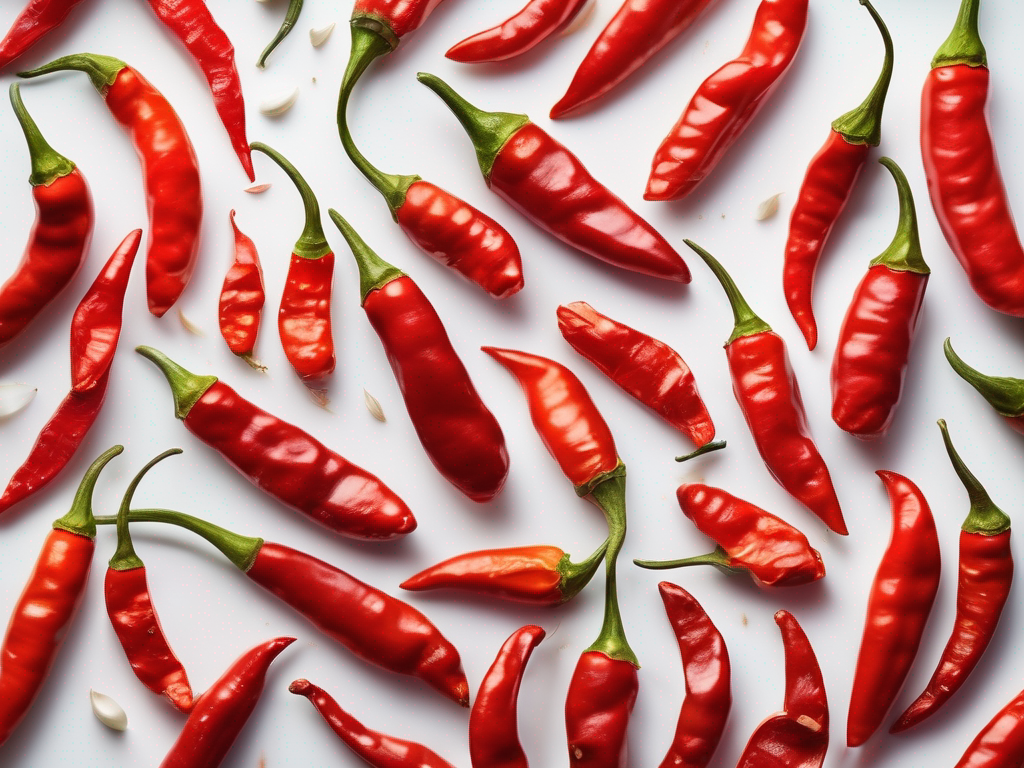
How to Tell if Cayenne Pepper Has Gone Bad
Get Your Free Food Safety Cheat Sheet
30 most common foods with instant answers. Print it and stick it on your fridge—completely free!
How to Tell if Cayenne Pepper Has Gone Bad
Cayenne pepper is a popular spice known for its fiery heat and distinct flavor. Whether you use it to spice up your dishes or add a kick to your favorite recipes, it's important to ensure that your cayenne pepper is still fresh and safe to consume. In this blog post, we will discuss how to tell if cayenne pepper has gone bad before using it in a recipe. (Cayenne pepper)
Signs of Spoiled Cayenne Pepper
Cayenne pepper, like any other spice, can go bad over time. Here are some signs that your cayenne pepper may have spoiled:
1. Change in Color:
- Fresh cayenne pepper is vibrant red in color. If you notice that the color has faded or turned brown, it may be a sign that the spice has gone bad.
2. Loss of Aroma:
- Cayenne pepper should have a strong, pungent aroma. If you find that the spice has lost its scent or smells musty, it may be time to replace it.
3. Clumping or Mold Growth:
- Check the texture of the cayenne pepper. If you see clumps or signs of mold growth, it is best to discard the spice immediately.
4. Taste Test:
- If you are unsure whether your cayenne pepper is still good, you can do a taste test. Spoiled cayenne pepper may have a stale or off taste.
5. Expiration Date:
- Always check the expiration date on the packaging. While cayenne pepper doesn't necessarily "expire," it can lose its potency and flavor over time.
Proper Storage Tips for Cayenne Pepper
To ensure that your cayenne pepper stays fresh for as long as possible, it's essential to store it properly. Here are some tips for storing cayenne pepper:
1. Airtight Container:
- Transfer your cayenne pepper to an airtight container to protect it from moisture and air, which can cause the spice to degrade faster.
2. Cool and Dark Location:
- Store your cayenne pepper in a cool, dark place away from sunlight and heat sources. Heat and light can accelerate the deterioration of spices.
3. Avoid Humidity:
- Keep your cayenne pepper away from humid areas like the stove or sink. Humidity can cause spices to clump and spoil.
4. Avoid Exposure to Air:
- Minimize the exposure of cayenne pepper to air by closing the container tightly after each use.
Safety Precautions When Using Cayenne Pepper
While cayenne pepper can add a flavorful punch to your dishes, it's essential to use it safely. Here are some safety precautions to keep in mind:
1. Avoid Contact with Eyes and Skin:
- Cayenne pepper can cause irritation if it comes into contact with your eyes or skin. Wash your hands thoroughly after handling the spice and avoid touching your face.
2. Start with a Small Amount:
- Cayenne pepper is known for its heat, so start with a small amount in your recipe and adjust to taste.
3. Store Away from Children and Pets:
- Keep cayenne pepper and other spices out of reach of children and pets to prevent accidental ingestion.
4. Consult a Doctor if Allergic:
- If you have a known allergy to peppers or spices, consult a doctor before using cayenne pepper.
Conclusion
In conclusion, it's essential to pay attention to the signs of spoilage when using cayenne pepper in your recipes. By following proper storage practices and safety precautions, you can ensure that your cayenne pepper stays fresh and safe to use. Remember to trust your senses and always prioritize food safety when cooking with spices like cayenne pepper. (Cayenne pepper)
Authoritative Food Safety References
These agencies and university labs inform every tip and health precaution we publish.
USDA FoodKeeper – Cold Storage Guidelines
Official refrigerator, freezer, and pantry timelines maintained by the U.S. Department of Agriculture.
Visit USDA FoodKeeperFDA Produce Safety Rule & Grower Guidance
Field-to-fridge handling practices that prevent contamination of fruits, vegetables, and leafy greens.
Visit FDA Produce SafetyCDC Foodborne Illness Prevention Hub
Surveillance-backed guidance on pathogens, symptoms, and steps to reduce foodborne illness risk.
Visit CDC Food SafetyUC Davis Postharvest Technology Center
University research detailing optimal storage atmospheres for produce after harvest.
Visit UC Davis PostharvestPenn State Extension – Home Food Preservation & Safety
Peer-reviewed extension bulletins on safe canning, chilling, and reheating practices.
Visit Penn State ExtensionGet Your Free Food Safety Cheat Sheet
30 most common foods with instant answers. Print it and stick it on your fridge—completely free! Want more? Upgrade to the complete guide with 70+ foods.
Scan your food directly and get instant safety info using our AI-powered camera feature.